A Week in the Bush Vol. 545
on Apr 23, 2025A wonderful find at the beginning of yet another incredible week at Sabi Sabi…
At a newly discovered hyena den, we were fortunate to witness a special moment during our morning drive - two newborn hyena cubs nestled beside their mother, suckling peacefully. It was a rare privilege to spend time with such tiny, energetic cubs as they tottered and tumbled around the den site, under the watchful eyes of their vigilant mother standing guard nearby.
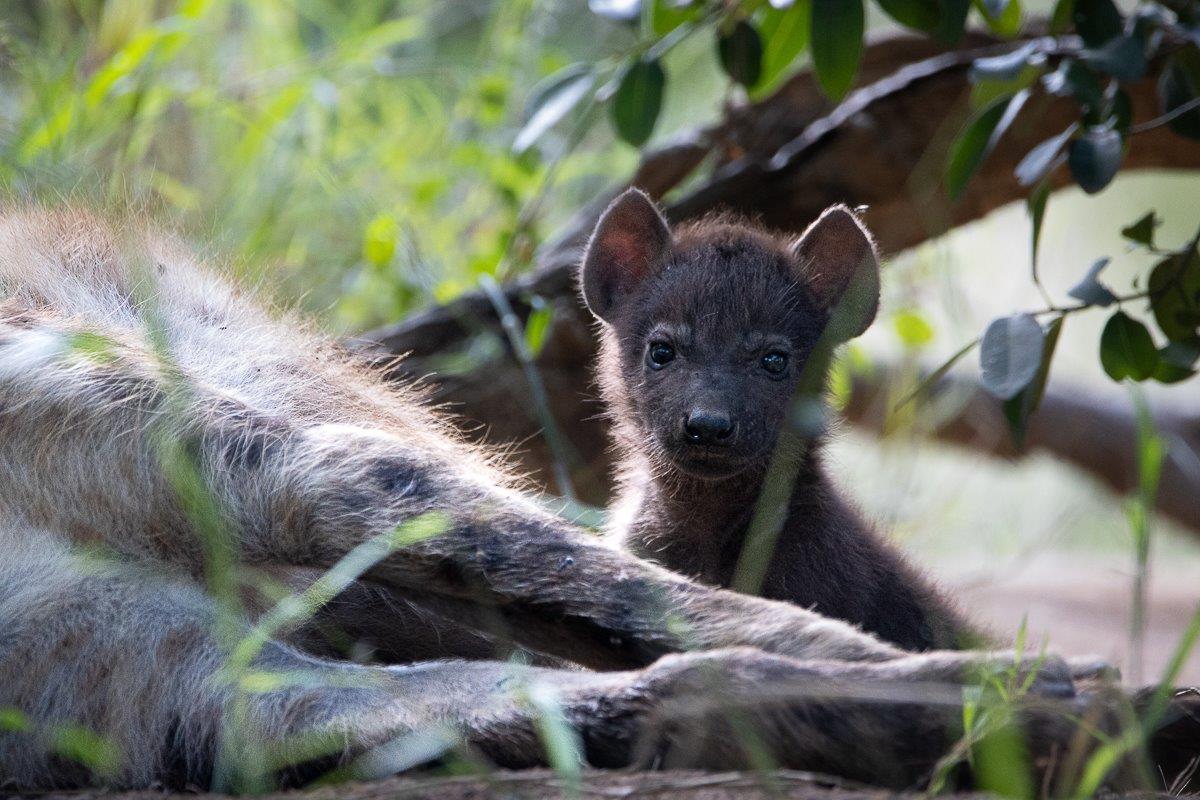


We came across this striking Bateleur, perched gracefully in the branches of a dead tree. The contrast between the stark, lifeless limbs and the bird’s vivid plumage was truly captivating.
Known for its short tail - so short, in fact, that its wingtips extend well beyond the tail feathers - the Bateleur is as unique in silhouette as it is in colour. Its scientific name, Terathopius ecaudatus, translates to “marvellous face, no tail.”


A herd of buffalo were gathered around a waterhole during the hottest part of the day. They were rushing into the water, eager to quench their thirst and cool themselves down. As ruminants, buffalo can afford to spend time resting and wallowing. They chew their cud throughout the day and primarily feed during the early mornings and late evenings.
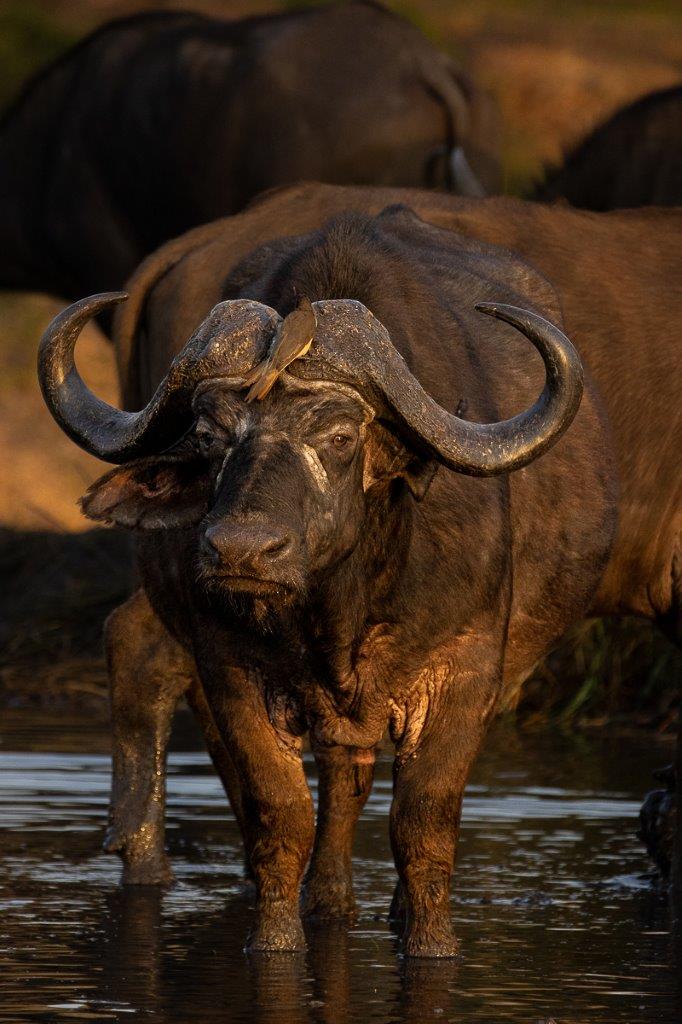
After the recent rains, we discovered a fascinating Fish-eating Spider from the genus Nilus standing effortlessly on the surface of a small pond. This remarkable spider dives beneath the water to hunt for tadpoles and small insect larvae that thrive in these environments. It’s a striking reminder of the surprises nature reveals after the rains.
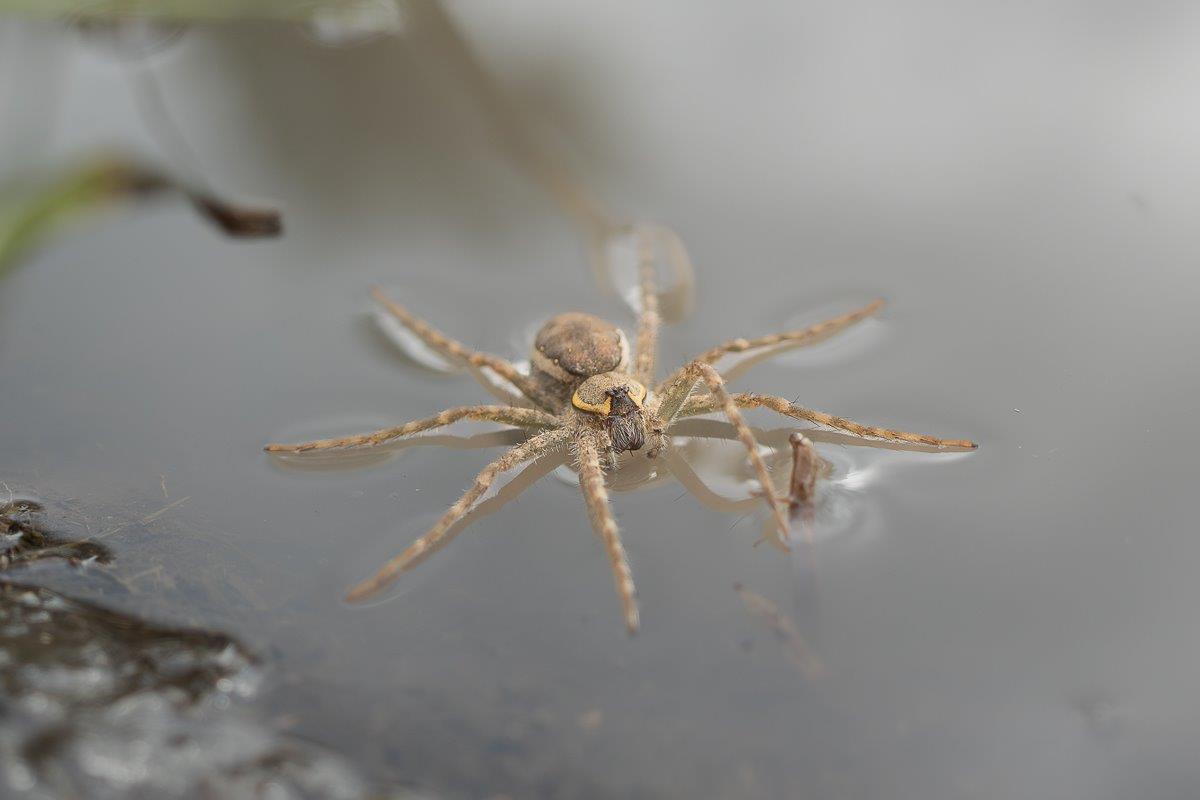
Two powerful male waterbuck clash in a flurry of muscle and horn, their curved weapons locking with a resounding crack. Hooves churn up dust as they push and twist, each determined to prove his dominance. Their shaggy coats shine under the setting sun, nostrils flaring with the effort of battle. In this primal contest, only one will claim victory, while the other is forced to retreat into the shadow of the bush.


Monitor lizards, also known as Nile monitor lizards, are the largest species of monitor lizard in Southern Africa. These impressive reptiles are semi-aquatic and are commonly found near water sources, thanks to their powerful swimming abilities. Skilled both on land and in water, they hunt a variety of prey including birds and their eggs, fish, frogs, and other small freshwater creatures.


On our way to Earth Lodge, this Spotted eagle-owl was sitting in the road feeding on something. These owls feed on a variety of prey from insects, amphibians and reptiles to birds and small mammals.
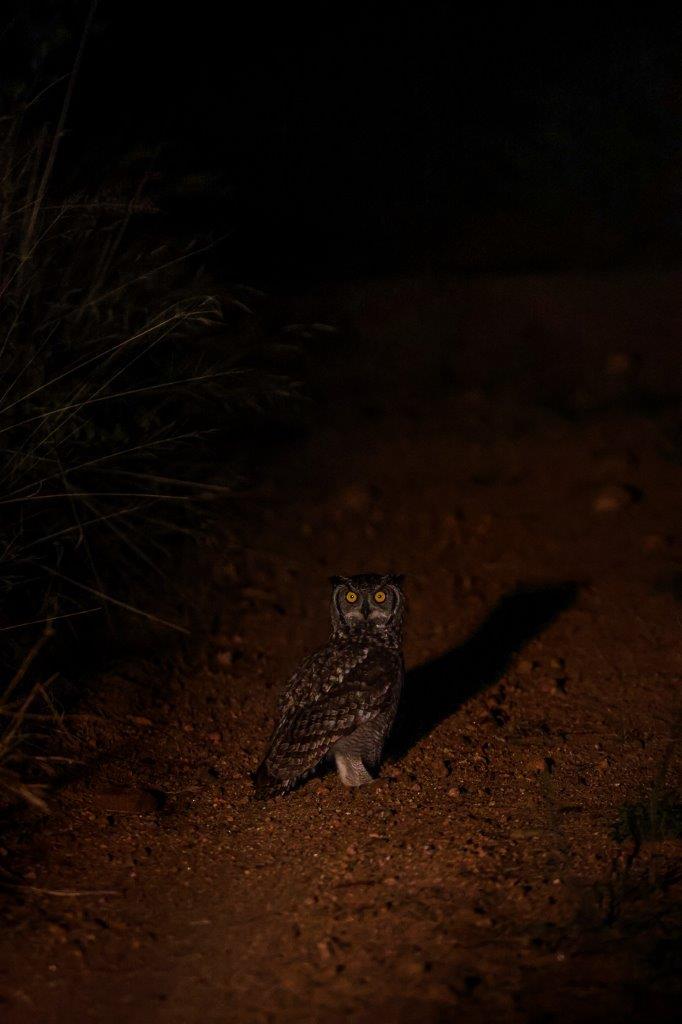
As this male ostrich moved across the open area, he paused to stare at us, giving us a great view of his striking features. His bright pink shins and beak are clear signs that he's entering his breeding plumage and will soon be on the lookout for a mate. Male ostriches are territorial and polygamous, often mating with up to four different females within their territory.
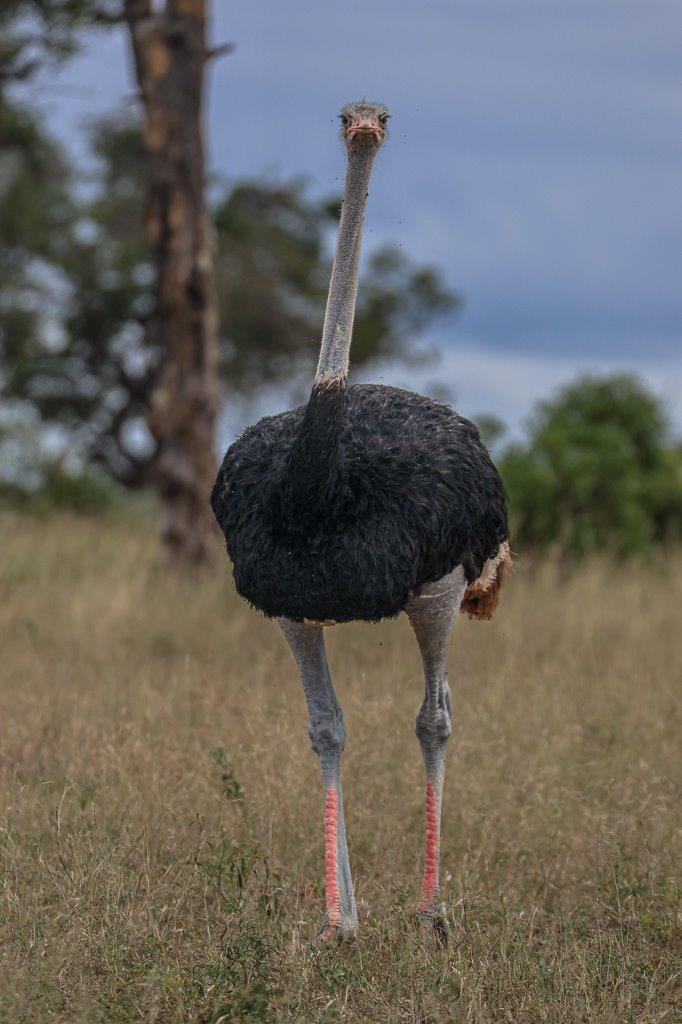
In the cool early morning, these two young elephant bulls engaged in a playful wrestling match, pushing and testing each other’s strength. Eventually, the larger bull decided he'd had enough and asserted his dominance, displaying his full power. Realising he was outmatched, the younger bull quickly broke off the tussle and wandered into a nearby drainage line to start feeding for the day.
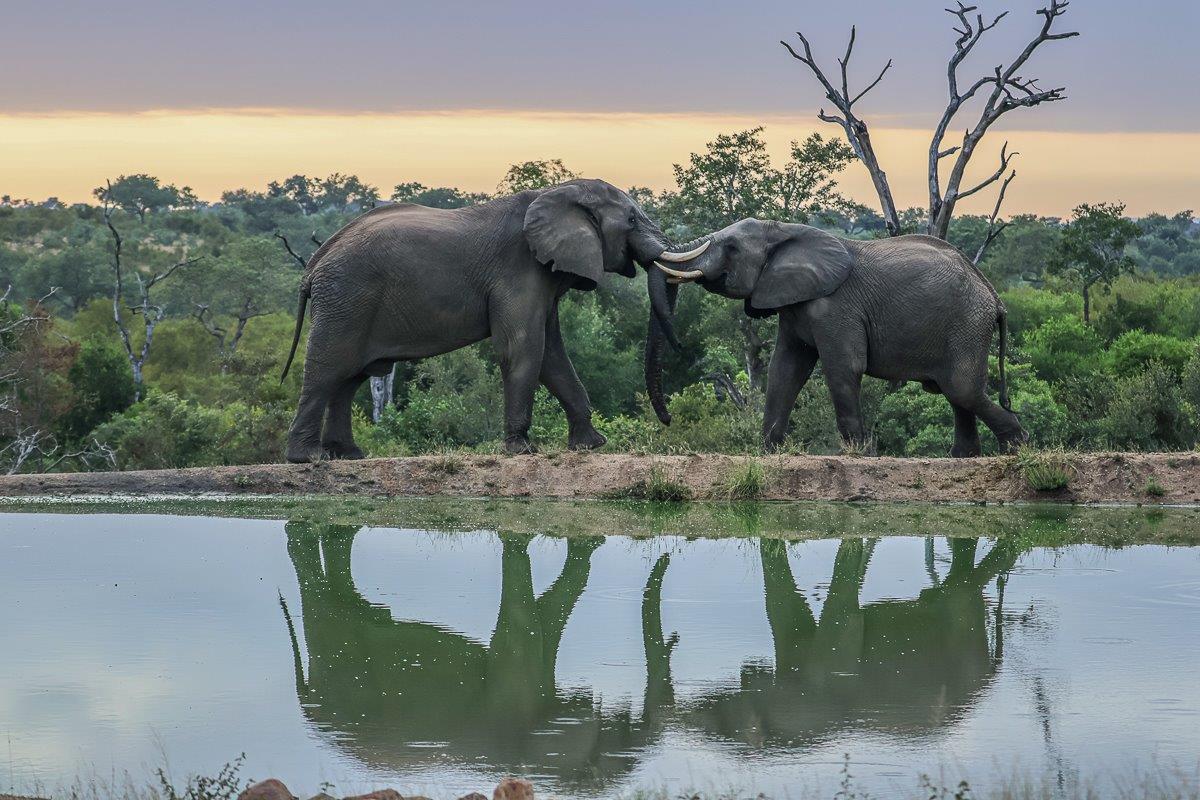
This lone buffalo bull showed great interest in some old dung and urine left behind by a previous herd that had moved through the area. As we approached, he paused and gave us a perfect pose - almost like a smile. What he was doing is known as the Flehmen Grimace. After sniffing the ground, the bull curled back his upper lip to expose the Jacobson’s organ, which helps detect hormone levels in the urine. This allows him to determine whether a female is in oestrus and ready to mate.

We came across the Msuthlu Pride moving slowly along the road, their little cubs in tow. They all appeared well-fed, their bellies full and heavy. Although we couldn’t be sure what they had taken down the night before, it was clear they had made a recent kill.
As we followed them, a familiar sound rang out - the excited whoops of hyenas. The lions paused, ears perked, and quickly pinpointed the direction of the noise. Within seconds, the entire pride bolted toward the commotion. We kept up and soon discovered a group of hyenas feasting on an impala carcass. But their meal was short-lived. The lions arrived and swiftly took over the kill, scattering the hyenas.
While lions are powerful hunters, they’re also opportunistic. They don’t hesitate to scavenge when the opportunity arises - whether it’s stealing from a leopard or challenging a pack of hyenas. In the wild, every chance counts.




The Msuthlu Pride had yet another successful night, managing to bring down a large kudu bull. By the time we found them, they had already devoured the entire carcass. The pride was sprawled out in the drainage line, with only the kudu’s horns and a few scattered bones remaining. They’ll likely spend the day here, digesting their meal, before moving on after nightfall - leaving the remains for the hyenas to scavenge.


It’s always a privilege to witness lions hunting in the open plains. These apex predators have perfected the art of ambush and camouflage, blending seamlessly into their surroundings. On this occasion, we watched the Southern Pride distract and confuse a lone wildebeest, nearly drawing it into a well-laid trap. Just as the moment of capture seemed imminent, a group of alert impalas sounded the alarm, giving the wildebeest a chance to escape. The lions’ plan was foiled - but only just.
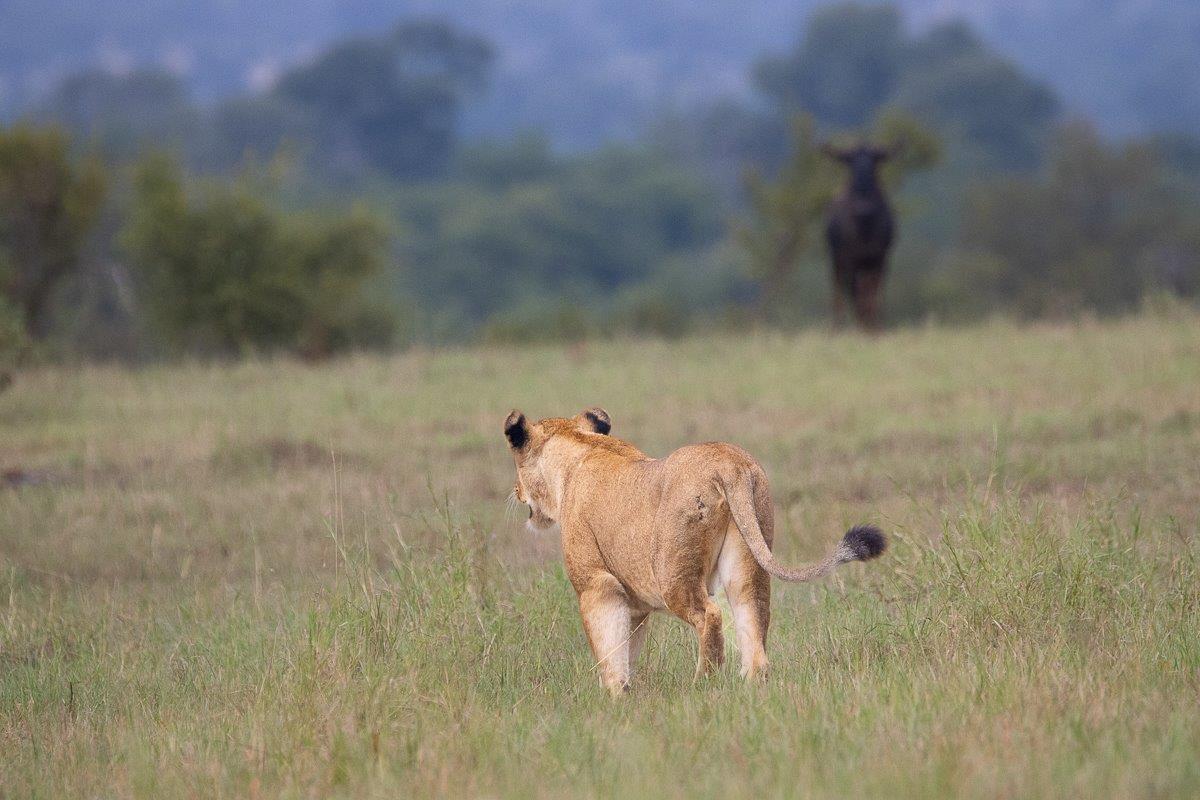


Despite their miss the previous day, the Southern Pride was successful in taking down a kudu. After finishing off their kill, the pride made their way to a nearby dam in the southern part of our reserve to quench their thirst. We found them early in the evening, resting by the water’s edge, bellies full and content as they digested their meal.
To our surprise, when we returned the next morning, the entire pride was still in the same spot. This was unusual behaviour for the Southern Pride, known for covering vast distances under the cover of night. With the sun climbing and the heat setting in, the lions looked set to spend the day lounging by the water, allowing their heavy meal to digest before likely moving on once darkness returns.




We found Golonyi far from her usual territory, and at first, it took us a moment to recognise her. It was her little cub that gave her away - curiously approaching us instead of following its mother. We followed the pair as they led us to a kill she had made the previous day.
When leopards are raising cubs, the mother will often explore areas beyond her core territory, seeking safe spaces where her cub can gradually learn to be independent. As the cub grows, she may eventually return to her original range, leaving the youngster to establish itself in the extended area she had introduced it to.
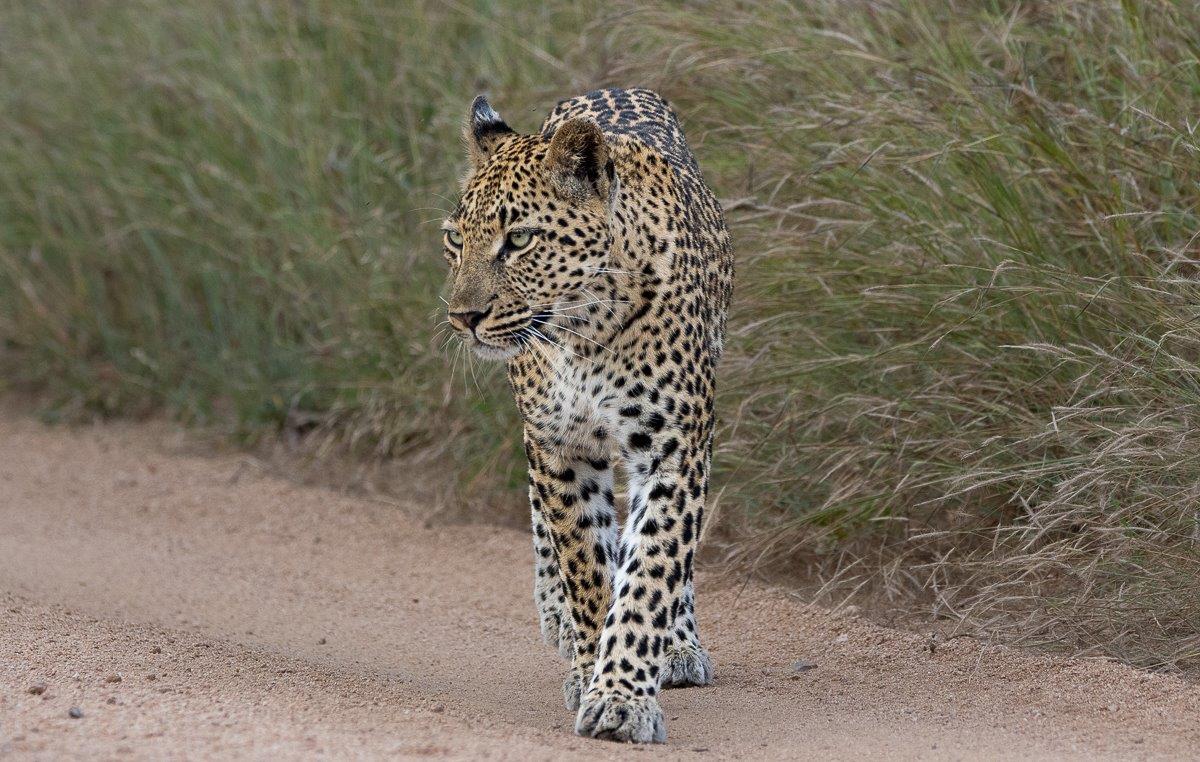


We followed up on this beautiful young male leopard as he finished off the last remains of his waterbuck calf kill before returning to a deep drainage line to rest in the cooler shade. This male has been spending more and more time around Earth Lodge and all eyes are on him to see if he will declare this as his own territory and make a name for himself.
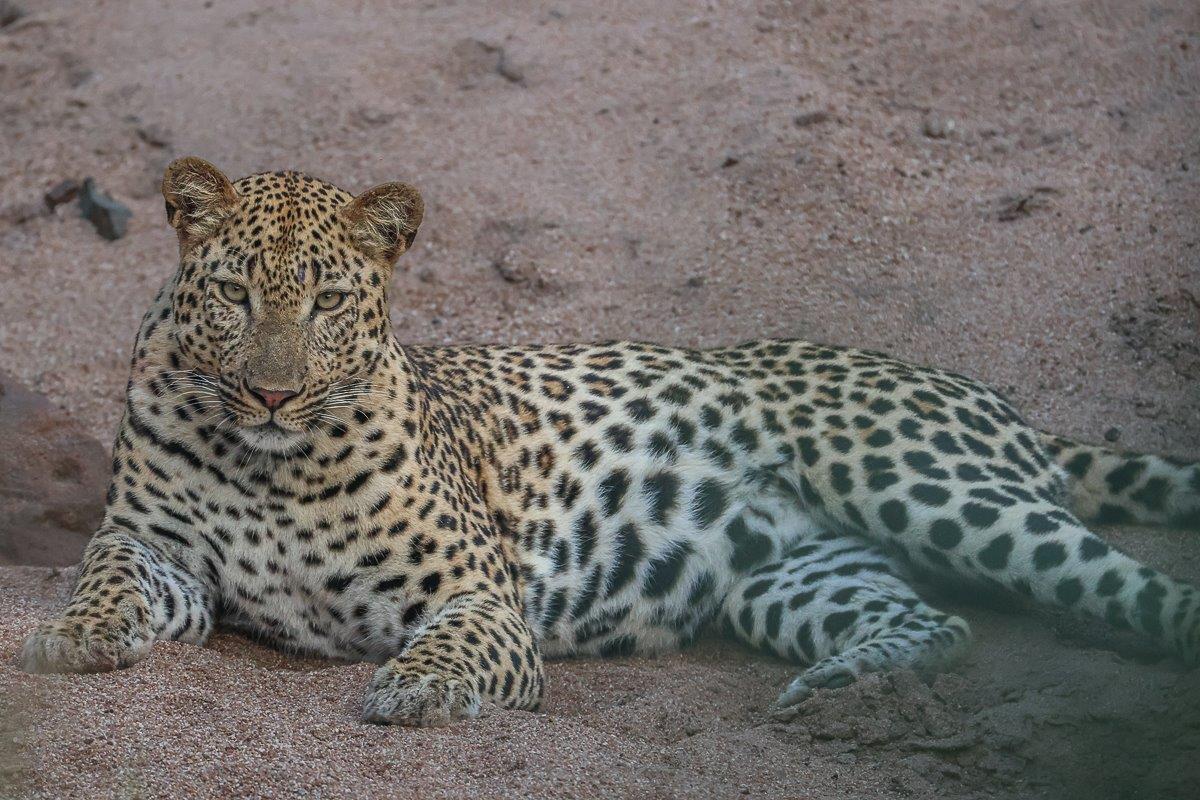
He was seen again a couple of days later, this time on our private airstrip. As we got closer, we discovered a young male leopard weaving through the bush, moving from one warthog burrow to the next in search of any opportunity. On cool, cloudy mornings like this, leopards know that warthogs tend to emerge later, once the temperatures begin to rise - making it the perfect time to lie in wait and ambush them as they exit, unsuspecting of danger at their doorstep.
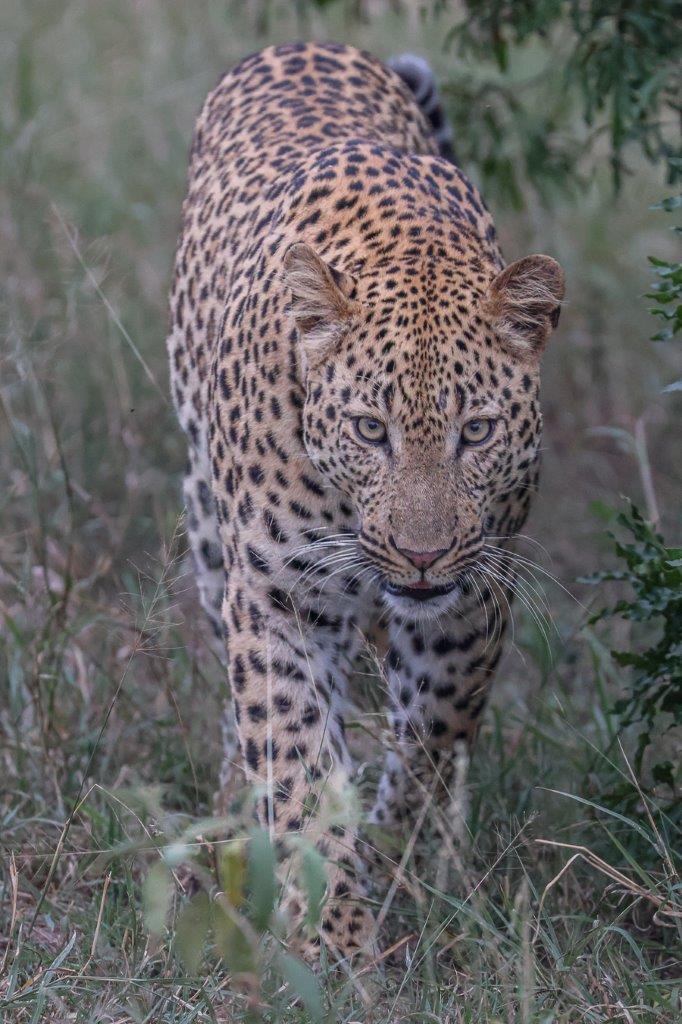
Lately, we've occasionally found Masungulo, Tengile’s cub, on her own, cautiously trailing duikers and impalas. It’s a clear sign that her mother is beginning to let her take steps toward independence, sensing that she may be ready to venture out on her own. Having followed her journey from a tiny three-month-old cub to a young leopard on the brink of adulthood has been a true privilege.
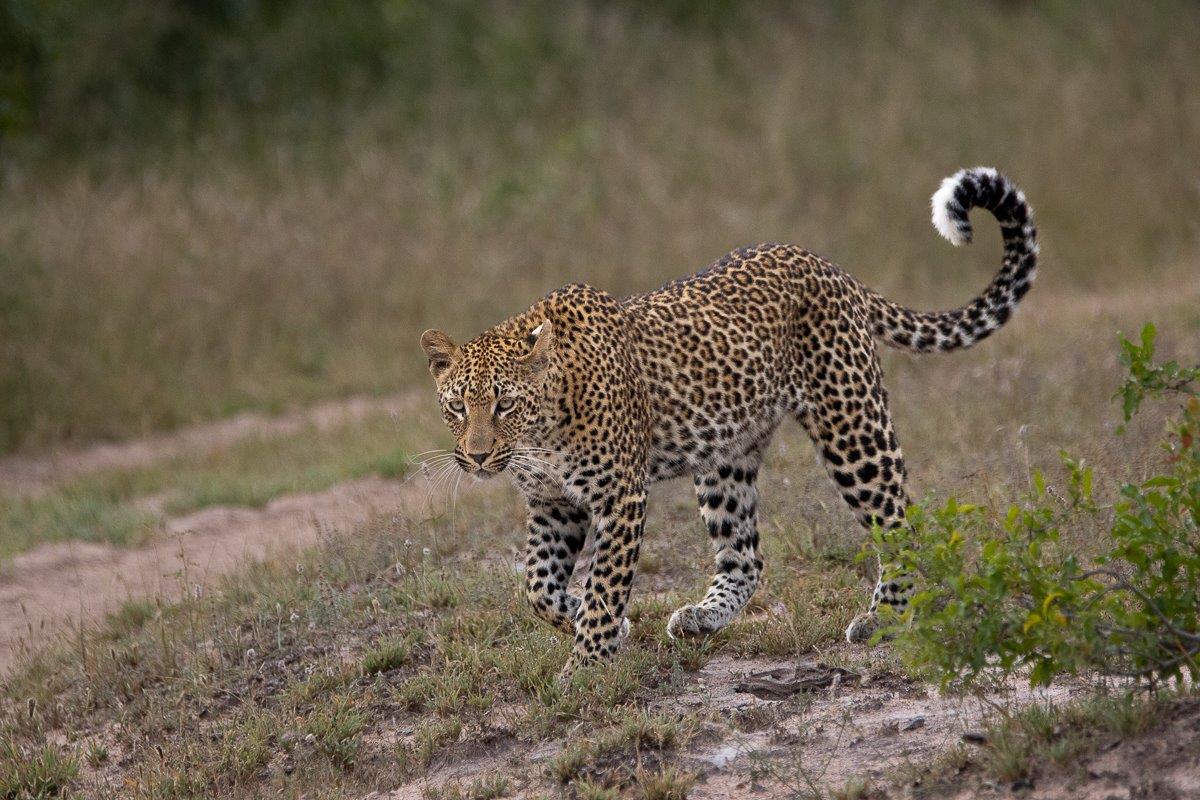
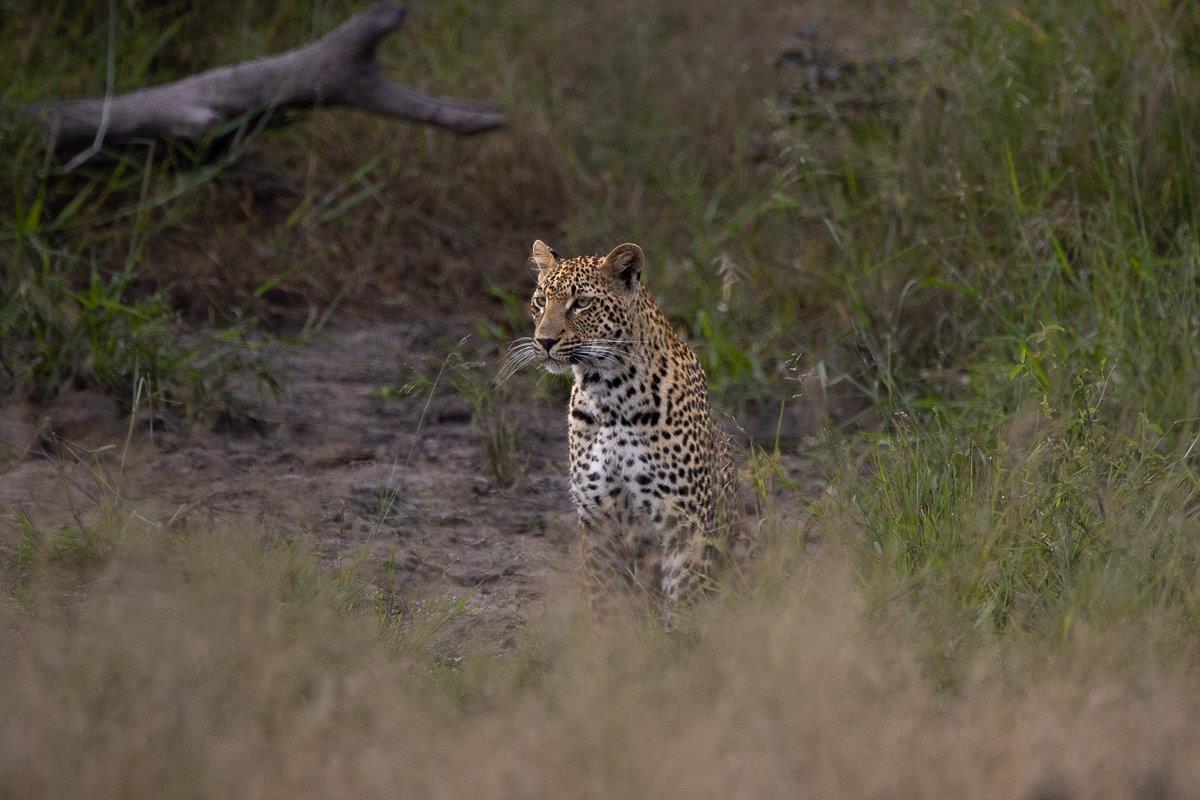
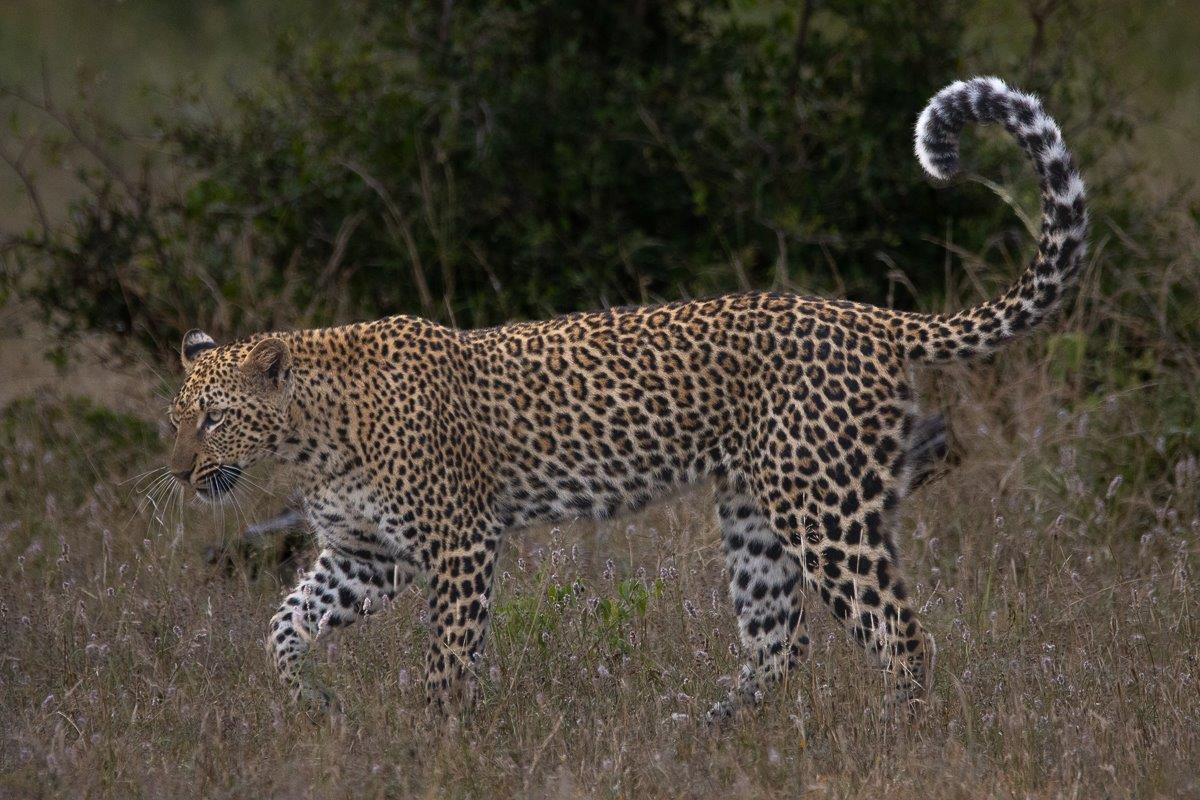
As we drove through the night, tracker Donald’s voice lit up with excitement—he had spotted a male leopard concealed in the grass. As we repositioned for a better view, he lay resting quietly in the tall grass, slowly stirring as nightfall encouraged his movements. This impressive leopard has been gradually asserting himself in this part of the reserve, growing more confident each day as he lays claim to the territory. We eventually left him where we found him, still lying in the same spot, patiently waiting for our departure before slipping into the thickets in search of a hunting opportunity.
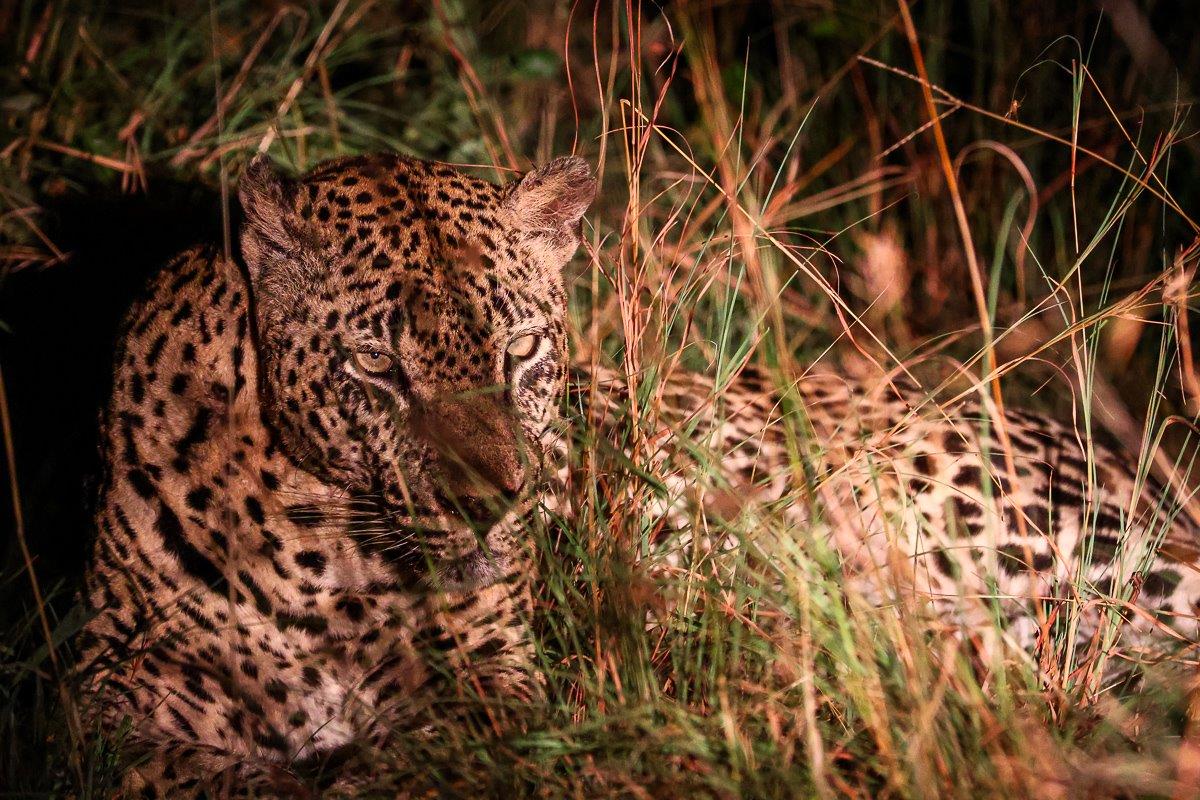
Until next time…
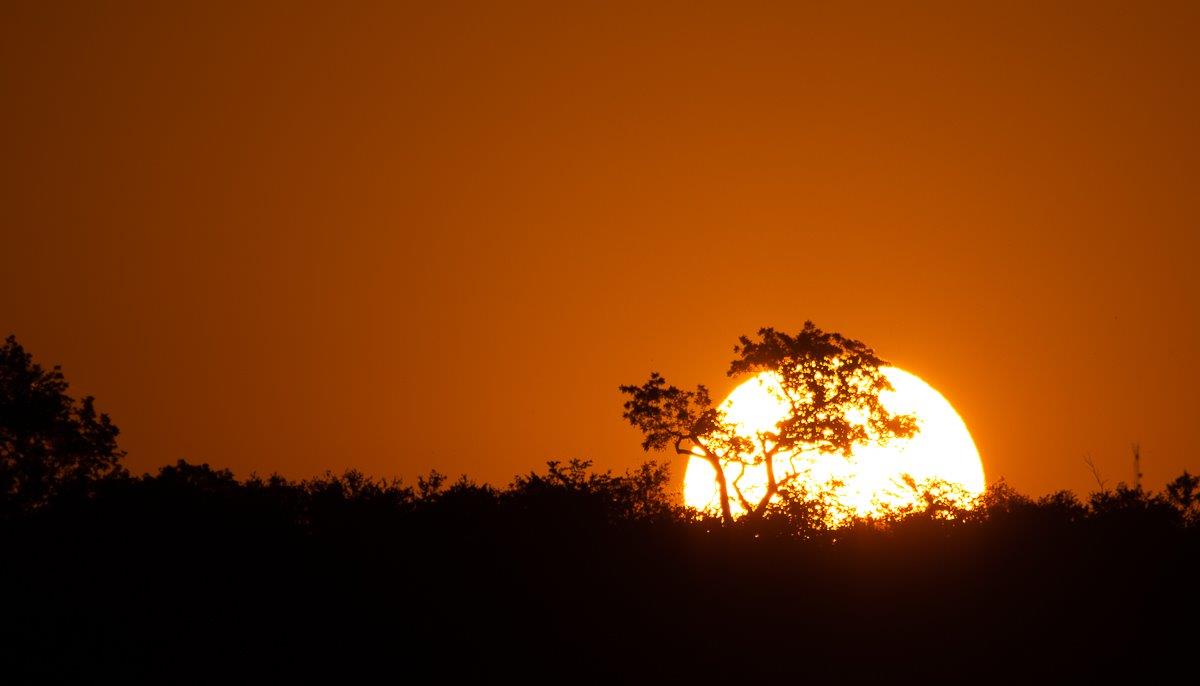
Blog by Wendy Claase
Images by Devon Jansen, Franco Hay, Jan Nel, Ronald Mutero and Ruan Mey







